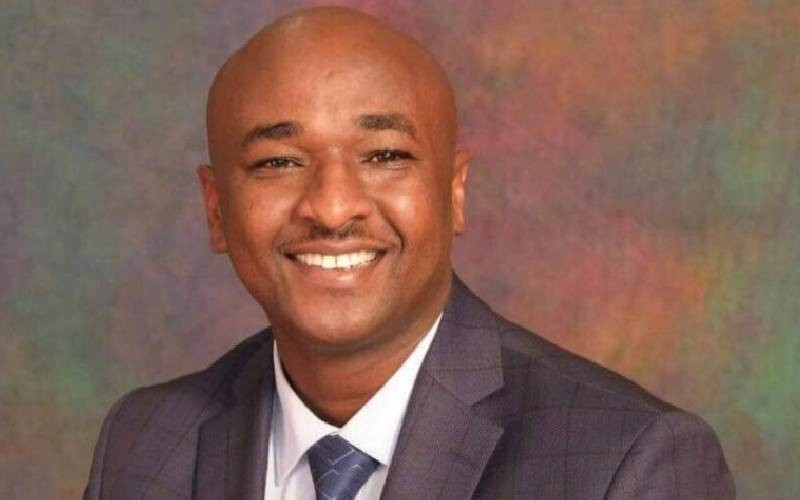 |
Residents flee the Westgate shopping mall in Nairobi after terrorists struck in September. Some 67 people were killed in the attack. [PHOTO: FILE/STANDARD]
|
By MICHAEL MUGWANG’A
On Wednesday, Kenyans will celebrate the beginning of a New Year.
But thousands will be remembering their kin with whom they started the year, but who are gone, thanks to the wave of crime that hit the country in 2013.
Crime Watch takes a reflective look at incidents of crime that shook the nation in a year that also marked the country’s 50th birthday and ushered in her fourth president.
Just as the country was conducting elections in March, some suspected members of the secessionist Mombasa Republican Council (MRC) raided a police station in Changamwe and left six policemen dead.
In May, residents of Bungoma and Busia witnessed one of the most devastating moments in their lives when a gang staged a series of attacks that left tens dead and more than a hundred maimed.
The gang appeared to be part of a large group of organised criminals. In one instance, a group of between 15 and 30 men, armed with crude weapons, hit Akubwait, Bengo market and Segero villages in Teso South in a night attack that lasted close to two hours.
Even the police appeared to have been caught unawares.
This came days after another scary execution of an even bigger attack on three villages in Bungoma. The attacks would later fizzle out but killings continued in these counties, with individuals falling victim in isolated cases like that of a lawyer to a senatorial candidate in Bungoma County.
Busia County was again to make news in October with reports of a gang rape and violent attack on a pupil four months earlier. The case sparked global outrage. The teenager was confined to a wheelchair after suffering a spinal injury and developing obstetric fistula.
In subsequent reports, a myriad defilement cases involving girls as young as five were exposed in the county, some that had remained unreported due to compromises struck between the victim’s relatives and their attackers.
Then came the ethno-political violence in Marsabit County that ran from August to as late as last week.
When the violence began, 20 people were killed and eight others injured in an incident in Moyale following clashes between two warring communities at Odha and Ellu.
Volatile town
A few days earlier, three people were killed at Antot near Moyale town.
Stay informed. Subscribe to our newsletter
Two weeks before that, the national flag and three government departments’ offices including that of assistant county commissioner of Central Division were looted and set ablaze by protesting locals after a human rights activist was killed.
Hundreds of residents staged a protest match in the volatile town and barricaded all major roads, including those leading to the provincial and police headquarters, accusing the sub-County security committee of taking sides in the differences pitting the two rival sides.
The residents say land, property and political positions fuel animosity between them. The results of the March 4 polls, they said, lit the fire.
As Moyale continued to burn, Mombasa also erupted in October after a key associate of the late radical Muslim preacher Sheikh Aboud Rogo was shot dead by unknown assailants.
Sheikh Ibrahim Ismail and three others were killed by unknown gunmen along the Mombasa-Malindi highway.
The slain cleric had been accused of plotting terror related attacks in Mombasa and Nairobi. Like Aboud Rogo the previous year, Sheikh Ibrahim’s death destabilised Mombasa, causing long-running riots and exchanges between the local Muslim youth and the police.
The police said four people were killed and dozens injured in the standoff. A church was burnt, vehicles stoned and shops destroyed as businesses closed early when the chaos erupted immediately after the 1pm Friday prayers.
Mosques takover
Many sad events, including the killing of members of the Christian clergy and the burning of more churches was to follow.
In a related incident, a madrassa teacher Faiz Mohamed Mwarusi was killed and his head chopped off. It is yet to be found though his torso has since been buried.
The chilling killing of the Islamic teacher by unknown assailants came in the wake of a growing intra-Muslim struggle pitting radical Islamists and moderate Imams especially in the town.
Radical youths believed to be allied to the slain Aboud Rogo have also stepped up their take over of mosques in Kisauni and Majengo areas of Mombasa.
Then a wave of kidnappings and ransom demand hit the country.
It got a notch higher in October when an assistant chief was kidnapped from her home in Solio Squatter Settlement Scheme in Nyeri.
Pauline Nyambura Mathenge, 40, was reportedly picked by at least six men from her house in Rehema village in the settlement scheme established in 2009. She was however released more than a week later under a cloud of secrecy.
And in a strange twist, Ms Mathenge attempted to withdraw a court case the state had instituted against her alleged kidnappers.
Earlier on in July, two children from a wealthy Nairobi family were abducted. Their captors demanded a record Sh86 million in ransom.
The 15-year-old twins, whose family runs the Mada Hotels, were kidnapped on their way to school. The twins were however rescued 10 days later and their captors, including a former police officer, arrested and charged.
Although several other crime incidents were reported in the year, the one that will live in the minds of Kenyans for years to come was the September 21 terror attack on Nairobi’s Westgate Mall.
During the terrorist attack that lasted four days on one of Kenya’s most prestigious shopping malls, over 68 people were killed on the first day. In total 70 people, including eight armed officers, were confirmed dead.
The Al Shaabab terror group claimed responsibility, citing Kenya’s participation in the African Mission in Somalia.
All in all, 2013 has been a bad year in as far as crime prevention in the country is concerned. As we usher in 2014, Crime Watch calls upon the country’s security chiefs to put in place mechanisms that will ensure Kenya is secure.
To you, fellow citizen, we urge caution and personal responsibility as we work for a crime-free country.
 The Standard Group Plc is a
multi-media organization with investments in media platforms spanning newspaper
print operations, television, radio broadcasting, digital and online services. The
Standard Group is recognized as a leading multi-media house in Kenya with a key
influence in matters of national and international interest.
The Standard Group Plc is a
multi-media organization with investments in media platforms spanning newspaper
print operations, television, radio broadcasting, digital and online services. The
Standard Group is recognized as a leading multi-media house in Kenya with a key
influence in matters of national and international interest.
 The Standard Group Plc is a
multi-media organization with investments in media platforms spanning newspaper
print operations, television, radio broadcasting, digital and online services. The
Standard Group is recognized as a leading multi-media house in Kenya with a key
influence in matters of national and international interest.
The Standard Group Plc is a
multi-media organization with investments in media platforms spanning newspaper
print operations, television, radio broadcasting, digital and online services. The
Standard Group is recognized as a leading multi-media house in Kenya with a key
influence in matters of national and international interest.









